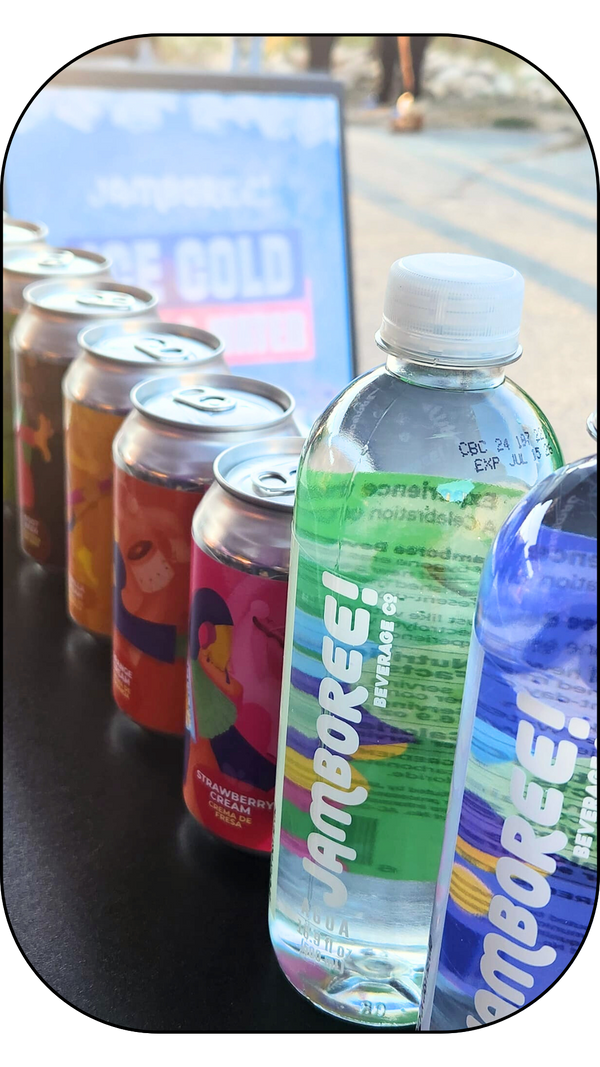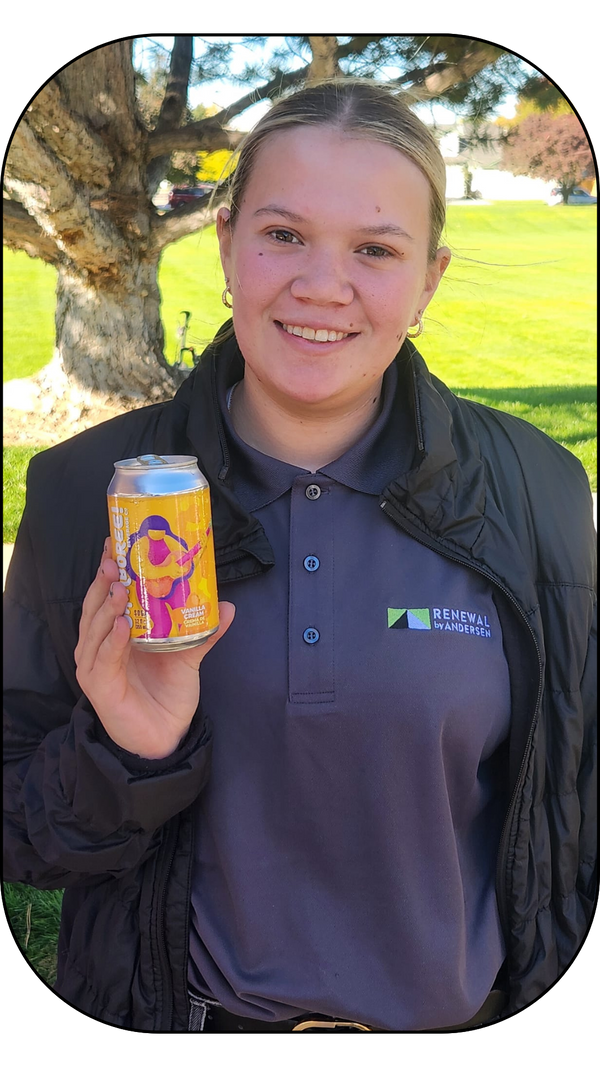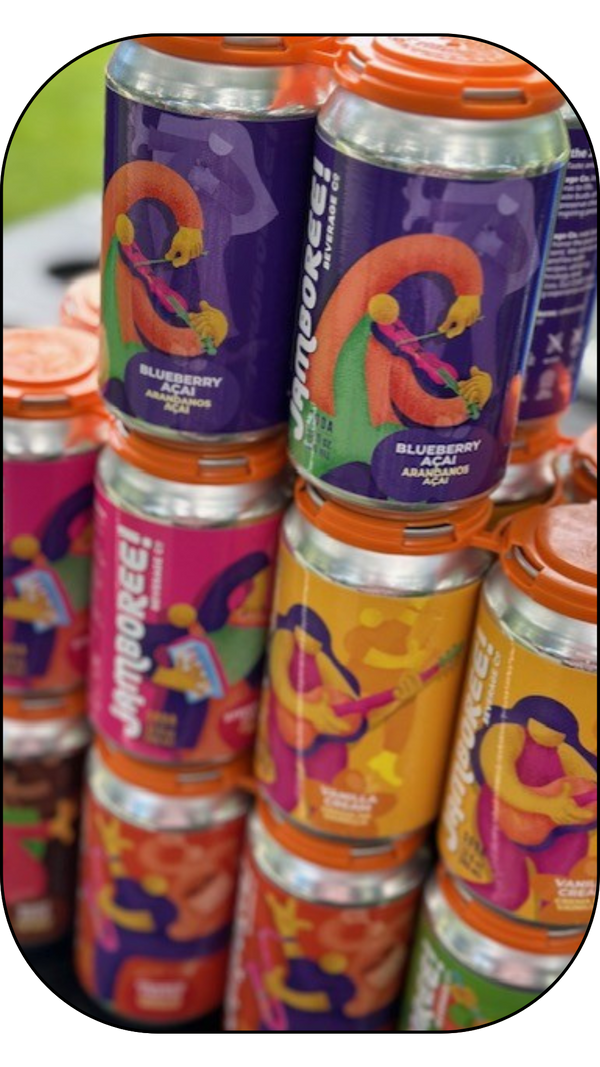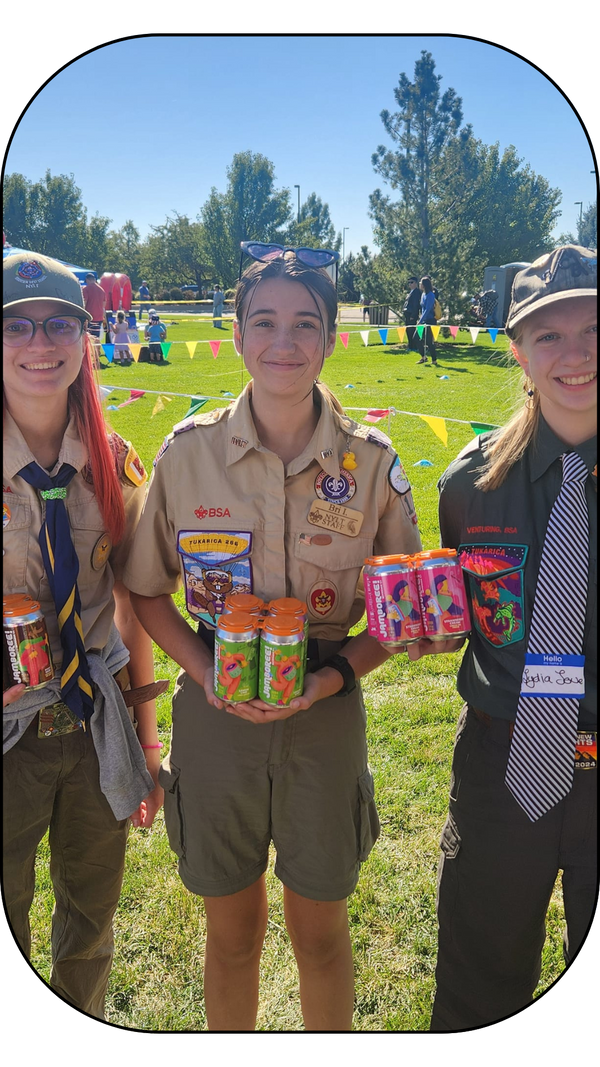Frequently Asked Questions
All of our sodas are gluten free! All of our Jamboree brand sodas are caffeine free. For more infomation about our sodas, please refer to the ingredient infomation posted on the site to determine whether all other ingredients meet your dietary requirements.
At this time you would have to buy in 4, 12, or 24 pack of just one flavor. Mixing and Matching is something we might have to consider in the future.
Yes, you can buy just one soda but you would have to go to one of our retail partners. We also sell single servings at special events.
Not at this time, but this is something that we are seriously considering.
Just go to our contact page and fill out the form indicating that you wish to carry our products. We will then contact you with information on doing so.
Yes, we are constantly exploring options to save you money on shipping cost?
On our website or check the back of Jamboree soda can. We would rather you have a can in your hands while checking for this information.
Jamboree Sodas with Natural and Artificial Flavors have a shelf life of 2 years from time of manufacture. However, we encourage customers to consume within 1 year of purchase. Jamboree Sodas are made in small batches and are filled and displayed for sell within weeks, not months like some mainstream soda brands. Up to 2 years soda is still consumable. However, time, light and storage conditions affects taste, color and carbonation.
Because we are a small fish in a big pond, we offer only 6 flavors: Root Beer, Lemon Lime, Vanilla Cream, Strawberry Cream, Orange Cream, and Blueberry Acai. As we grow we will consider other beverages offerings to include flavored waters, ice teas and lemonades.
Bottled water refers to water that is sealed in containers and intended for human consumption, without any additional ingredients. People often choose bottled water as an alternative to tap water, using it for drinking, cooking, or making beverages like coffee
or tea. Mineral waters are typically carbonated and serve as substitutes for soft drinks or cocktails.
Regulations on the quality and safety of municipal water supplies are enforced by the U.S. Environmental Protection Agency (EPA) under the Safe Drinking Water Act (SDWA). The EPA sets standards called Maximum Contaminant Levels for over 80 contaminants that can be present in drinking water.
When it comes to bottled water, the FDA regulates it as a food item under the Federal Food, Drug, and Cosmetic Act if it is bottled in one state and sold in another. The FDA has established standards that govern the microbiological, physical, radiological,
and chemical characteristics of bottled water. It conducts inspections on bottling plants and collects and analyzes samples of bottled water. Generally, bottled water must meet the same standards as public drinking water supplies.
"Bottled Water" simply refers to sealed containers of pure drinking water with no added ingredients except for optional safe antimicrobial agents or fluoride.
"Artesian Water" comes from wells tapping a confined aquifer where the natural underground pressure raises the level of the water above the top of the aquifer. External force may be used to aid in collecting Artesian Water.
"Ground Water" originates from a saturated area below ground level with equal or higher pressure than atmospheric pressure. Ground Water should not be influenced
directly by surface water sources. Mineral water is water with at least 250 parts per million (ppm) total dissolved solids (TDS) from a protected underground source. It has a consistent level and proportion of minerals and trace elements without any additional minerals.
"Purified Water" is produced through distillation, deionization, reverse osmosis, or other suitable processes that meet the definition of "Purified water" in the United States Pharmacopeia. It can also be called "deionized water," "distilled water," or "reverse osmosis water" depending on the process used.
"Sparkling water" is treated to retain the same amount of carbon dioxide it had when it emerged from its source.
"Spring water" comes from an underground formation where it naturally flows to the earth's surface. It must be collected directly at the spring or through a borehole connected to the same underground stratum as the spring. The flow of water must be natural, either through a natural opening or with a measurable hydraulic connection between the borehole and spring.
"Well water" is obtained from a hole in the ground that taps into an aquifer.
If you have a health condition that requires reducing your intake of a certain substance like sodium, choosing bottled water with lower levels of that substance may be the best option. It's important to consult your physician for advice on whether bottled water is suitable for you.
Bottled water can be used as an alternative if there are contaminants in the local water supply or private well that exceed drinking water standards. This can happen during a flood or natural disaster, when household plumbing causes lead and/or copper to enter the drinking water, or when a safe supply is not available during a camping trip.
You can find out where bottled water comes from by reading the label. The source is listed 98% of the time. Bottled water can come from springs, wells, surface waters, or other sources. Massachusetts keeps a list of bottled water sources and verifies this information as part of their licensing procedures. You can also contact the Department of Public Health for more details about the source. The rules for
bottled water state that the source must be listed unless reverse osmosis treatment has been applied.
According to the FDA, if bottled water is produced according to regulations and remains unopened, it has an indefinite shelf life. Therefore, expiration dates on bottles are optional and may mainly reflect concerns about taste and odor rather than safety. It's recommended to store bottled water in a cool place away from direct sunlight.





